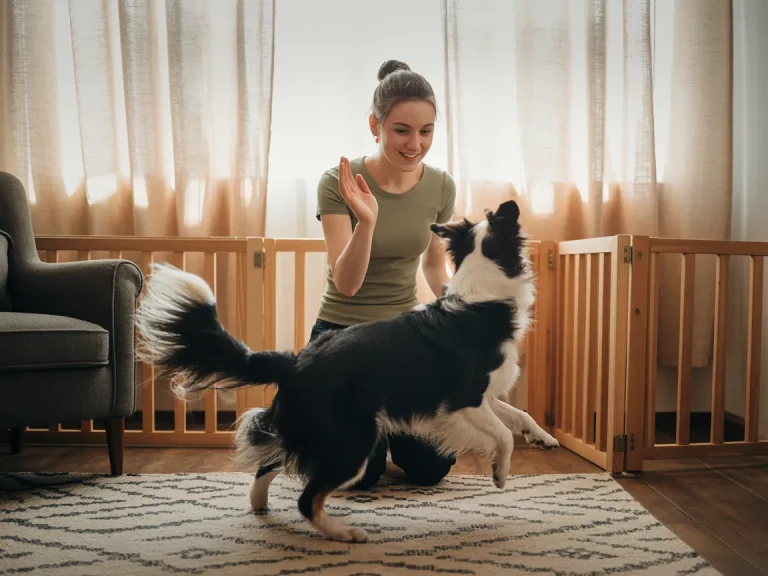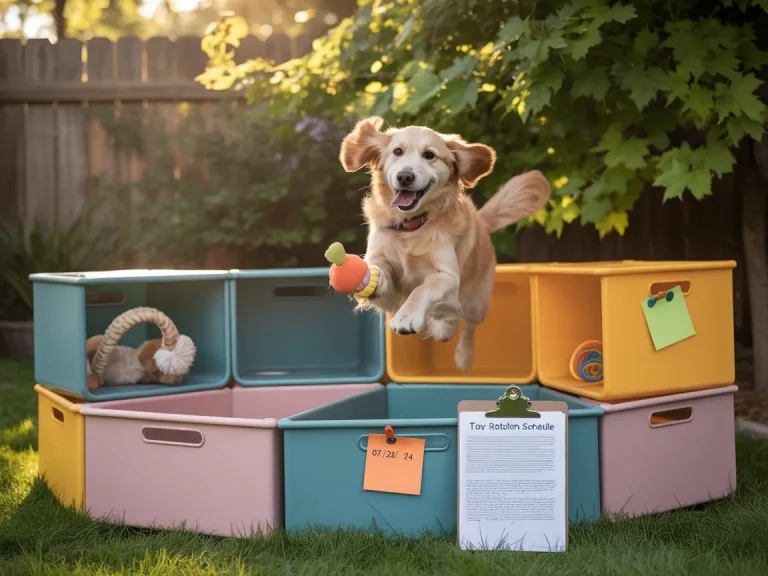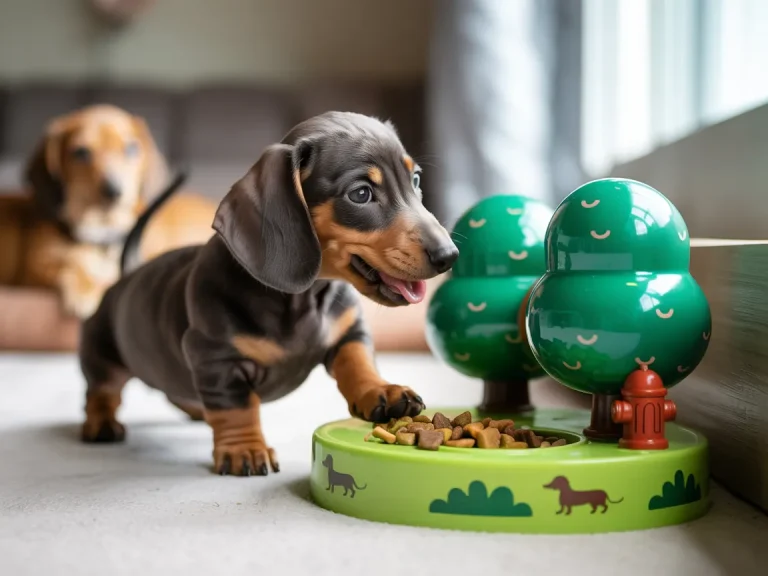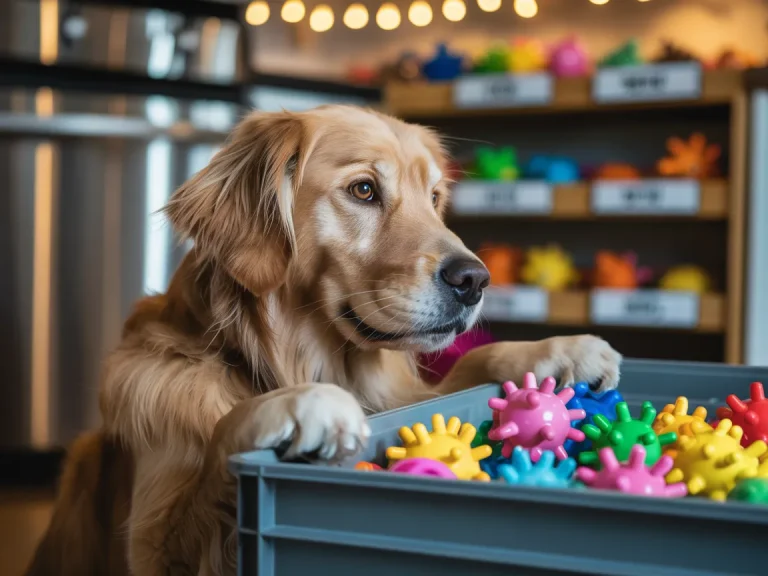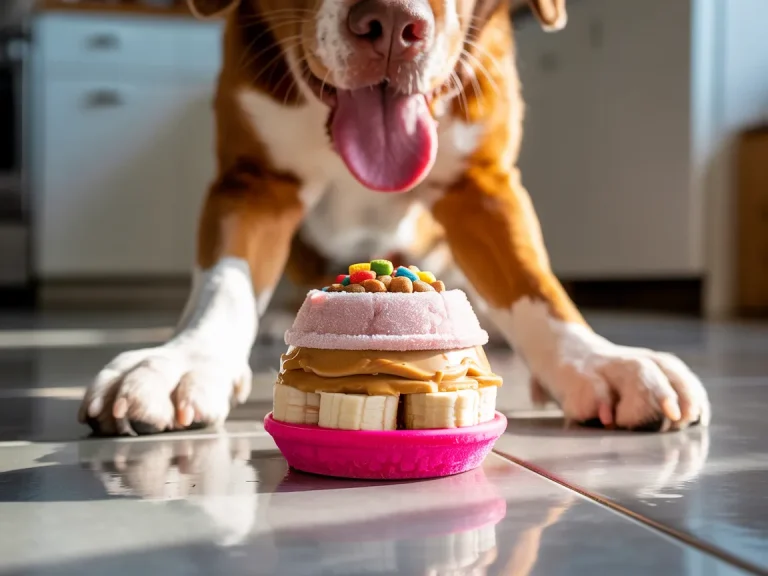Homemade enrichment toys can turn a ho-hum playtime into a brainy, tail-thumping adventure. Crochet toys hit a sweet spot: touchy-feely textures, built-in toughness (when you stitch with purpose), and just the right level of “hmm, how do I get that?” Whether you’ve got years of hook-fu or you’re holding a hook for the first time, this guide walks you through five easy projects that spark curiosity, reward problem-solving, and keep your dog happily busy. If you like the science-y side, the AKC breaks down how movement and play support your dog’s brain and mood, in plain English.
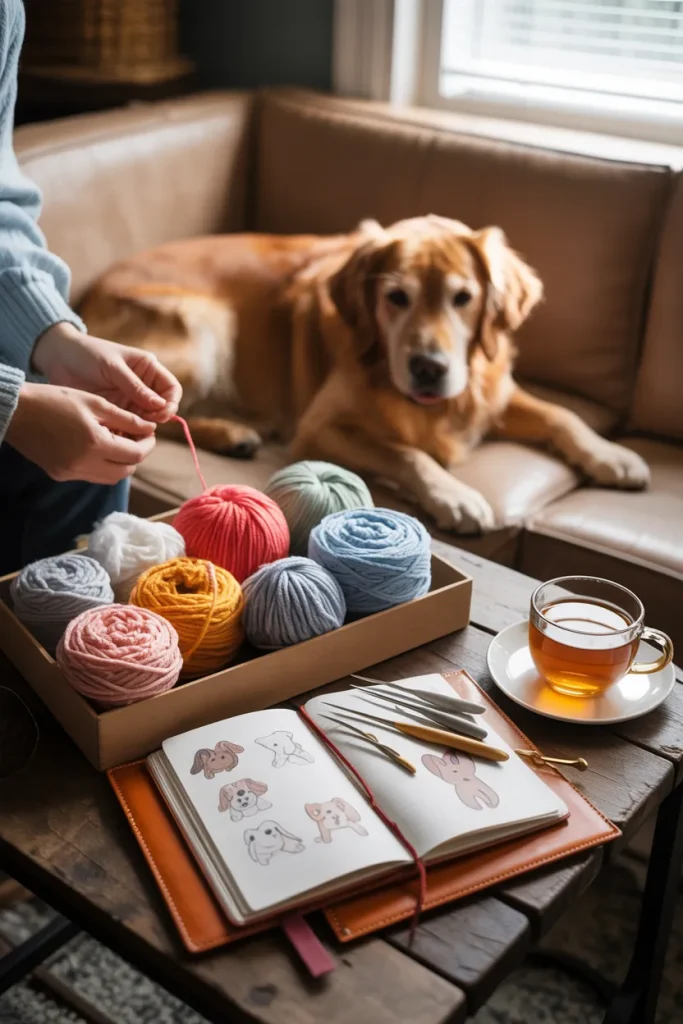
1. Tug-and-Treat Braided Rope Toy
Why it works
Dogs are wired for tug. Add a hint of scent or taste and the game levels up. This design blends satisfying texture, steady resistance, and a small “find-it” moment—perfect for moderate chewers and dogs who like to dig in and focus. Want a few guardrails? The AKC’s quick guide to safe tug play shows how to keep sessions short, build an “out” cue, and keep the game friendly.
Materials
- Bulky cotton yarn (three or more colors make it pop)
- Scissors
- Optional: a tiny treat pouch or a few kibbles wrapped snugly in a scrap of yarn
How to crochet dog toys (simplified)
- Cut three long strands (about 2–3 feet each, depending on your goal length).
- Knot one end, leaving a short tail for grip.
- Braid tightly. Halfway through, tuck in the wrapped treat bundle and secure it with a few firm stitches so it’s discoverable—not a freebie.
- Tie off the far end and trim. Weave in loose ends so they don’t fray.
- For extra durability, lightly whipstitch the ends or add a small loop so you can anchor the toy for solo play.
Trainer tip: Rotate “flavors” by swapping what you hide inside, or lightly scent one section with a canine-safe herb (a tiny pinch of dried lavender, only if your dog tolerates it). Always supervise tug, and retire the toy if it starts to unravel—no one wants string snacks.
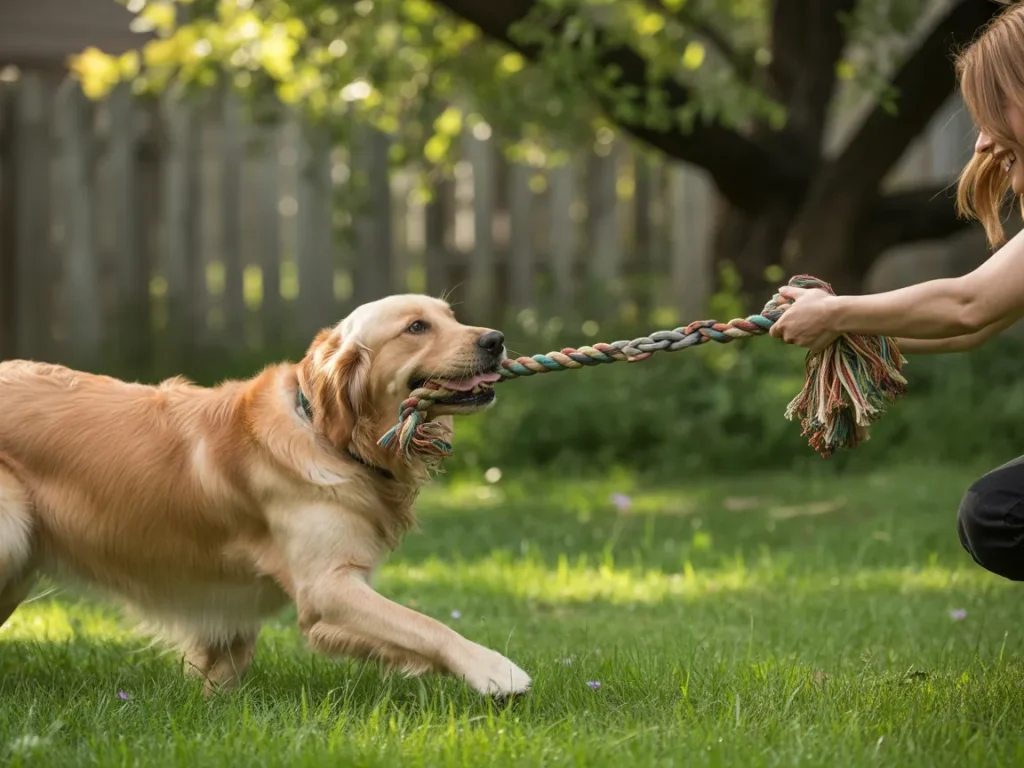
2. Hidden Surprise Pull Toy (Puzzle Sleeve)
Why it works
It’s a soft puzzle with a prize. Your dog has to nudge, paw, and pull to reveal what’s inside, which channels mental energy and turns curiosity into calm satisfaction.
Materials
- Medium-weight acrylic or cotton yarn
- A crochet hook that matches your yarn
- Small plush, crinkle insert, or a handful of kibble
- Yarn needle
Project overview
Crochet a snug tube in single crochet (use half double if you want a little more give). Close one end with a tight seam and leave the other open. Slide in the “surprise,” then fold the open edge over and add a few slip stitches to create a semi-secured flap—enough resistance to make your dog work, but not so tight it’s frustrating. Want more engagement? Add raised textures like bobbles or ridges on the outside for extra nose-and-paw feedback.
Dial the difficulty up or down by how firmly you secure the flap or by layering a couple of small surprises inside. It’s enrichment with training wheels—challenging, but kind.

3. Squeaky Amigurumi Fetch Buddies
Why it works
Fetch is already a party; add a squeak and it’s a parade. Amigurumi shapes with a soft “chew-me” texture plus that cheeky squeaker give dogs a multi-sensory win—something to chase, chomp, and celebrate. And because you’re crocheting it yourself, you can size it for your pup’s mouth and play style instead of forcing a one-toy-fits-all situation.
Materials
Grab a sport or DK yarn (faux fur or smooth—your call), a matching hook, a pet-safe squeaker, a fistful of polyester stuffing, and a yarn needle.
Construction basics
Work a simple shape in continuous single-crochet rounds—a ball, a bone, or a little critter head. Before you close the last few stitches, wrap the squeaker in a thin cushion of stuffing (so teeth aren’t hitting plastic), then fill the rest to hold its shape. Close firmly, weave in the tail, and embroider any features—no buttons or glued bits that could pop off mid-zoomie. Got a determined chewer? Add an extra reinforcing round at high-stress seams and avoid tiny shapes that invite deep, focused gnawing. Keep this one as a “special fetch” toy for supervised play so the squeak keeps its magic.

4. Snuffle Mat-Inspired Modular Squares
Why it works
Noses are your dog’s superpower. A crochet snuffle setup turns snack time into a calm foraging mission—less sprint, more slow detective work. It’s low impact, high engagement, and brilliant for dogs who need to take the edge off without miles of running. If you’re new to snuffle setups, this AKC explainer on snuffle mats shows the concept in action.
Materials
Use a sturdy worsted yarn in a few colors, a hook that gives you a dense fabric, a couple of stitch markers if you like, and small, dry treats.
How to build
Crochet several 6×6 inch squares and play with texture—puff stitches here, bobbles there, some layered single or half-double crochet to make little pockets and folds. On a few squares, build soft flaps or tucked channels where a treat can slide and hide. Join the squares into a mat with slip-stitch or single-crochet seams so you can swap a panel out when it needs a wash or you want to change the “puzzle.” To use it, drop treats between layers and under flaps so your dog has to sniff, nudge, and gently lift to score the prize. Make it bigger for multi-dog households or keep a single square for a quick scent session. Bonus: machine-washable yarn makes cleanup as easy as a sit-stay.
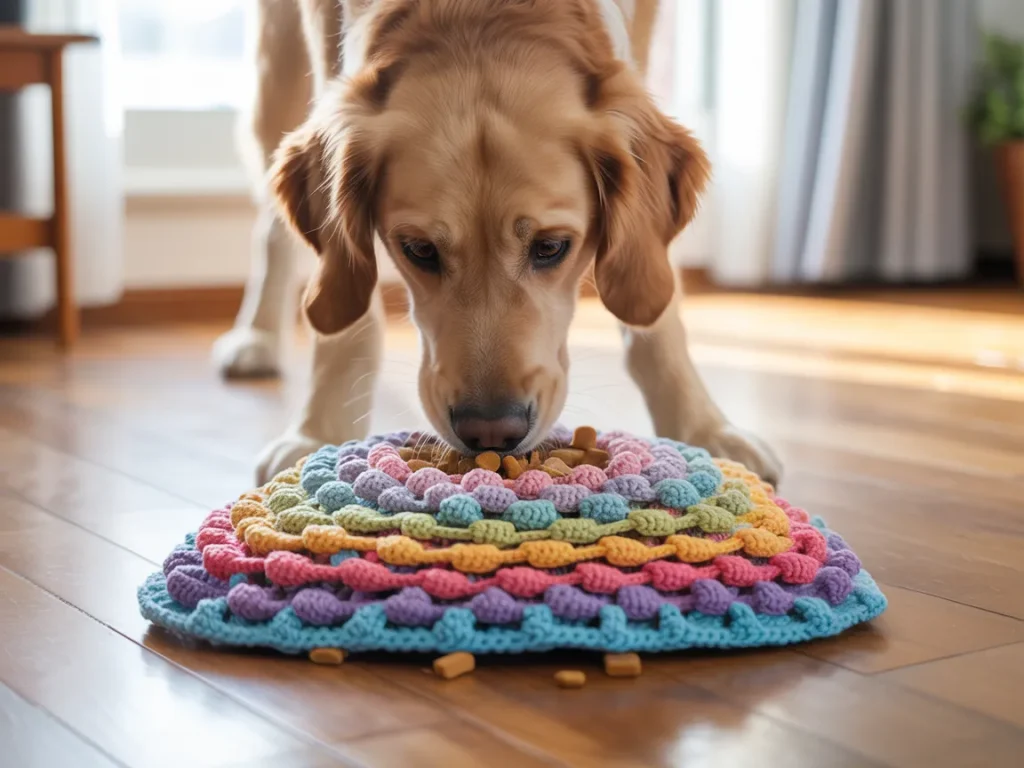
5. Chew-and-Comfort Knot Ball
Why it works
Some dogs don’t just want to chew—they’re looking for something cozy to hug with their mouth. A knot ball gives them both: a gentle “stress ball” feel with enough texture to satisfy that chomp reflex. The interlocking strands spread pressure so teeth get feedback without the hard thud of rubber. It’s a comfort toy with a gym membership—squeezable, but sturdy.
Materials
- Thick cotton rope-style yarn (or a dense cotton blend)
- A large hook that can scoop big loops without splitting
- Optional: a tiny fabric sleeve for a whisper of chamomile or lavender—only if your dog isn’t sensitive to scents
Steps
- Make the core. Wind your yarn into a tight little ball, tucking the tail so it can’t be pulled free. Think “firm plum,” not “squishy marshmallow.”
- Build the texture. Crochet around the core with loose chain loops and single crochet, forming chunky “petals” your dog can grab.
- Lock it in. Thread sections through each other to create simple interlocking knots, then cinch everything snug so no long ends escape.
- Optional scent insert. If you’re using a removable sleeve for calming scent, nestle it deep in the center and close up securely. This should be sniffable, not snackable.
Trainer tip: Perfect for teething puppies or dogs navigating big life changes. Supervise the first few sessions—if any strand starts to fray, retire it. No one needs a yarn salad.
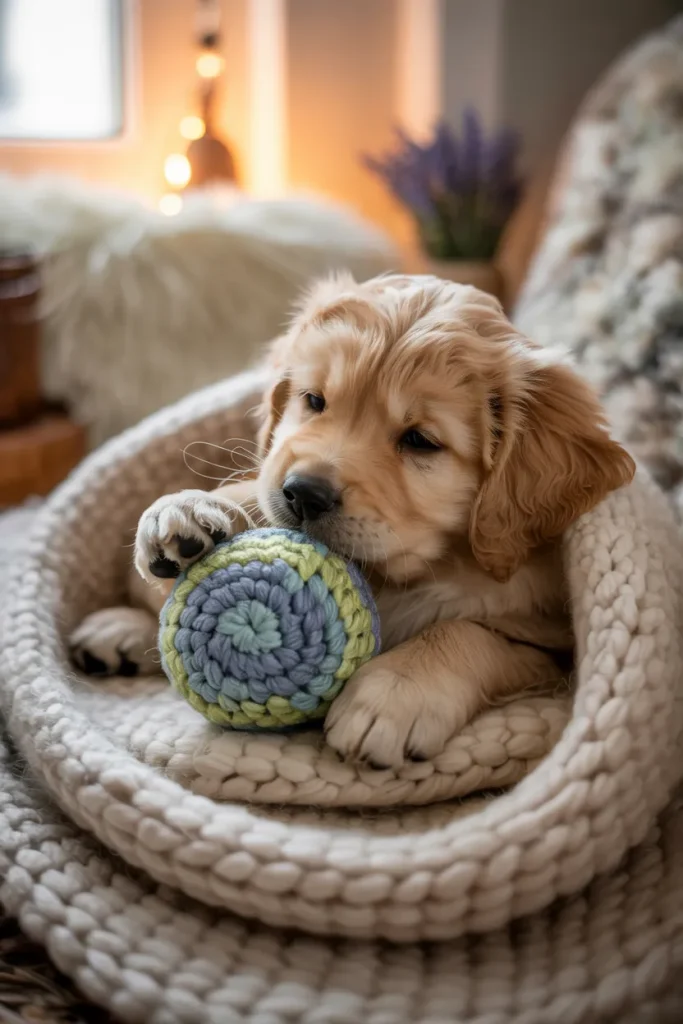
Bonus: Maintenance and Safety Tips for Crochet Dog Toys
Give toys a quick checkup. Even the best stitches loosen with love. Look over seams, squeakers, and any inserts before playtime.
Pick the right fiber. Cotton and sturdy cotton blends are your friends—less odor, easy to wash, and safer fraying than fuzzy novelty yarns with glitter or loose bits.
Match the size to the dog. If it fits fully behind the molars, it’s too small. If your dog can’t get a grip, it’s too big. Aim for that “just right” mouthful.
Design for laundry day. Machine-washable yarn keeps life simple. If you’ve added scent pouches or squeakers, make them removable so cleaning isn’t a puzzle.
Rotate like a toy librarian. Hide a few favorites and reintroduce them later. Novelty keeps motivation high without you making new toys every weekend.
Conclusion
Crochet lets you tailor toys to your dog’s mood—tug, sniff, puzzle, or cuddle—and dial up difficulty as they learn. With smart materials and a little behavior know-how, your DIY pieces become more than playthings; they’re daily tools for a calmer, happier, more engaged dog.
Disclaimer: This article is for informational purposes only and does not constitute professional veterinary advice. Always consult a licensed veterinarian or certified dog trainer regarding the specific needs and health of your dog.
